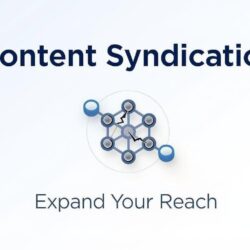B2B Market Segmentation Strategy Guide is crucial for businesses seeking to optimize targeting, enhance engagement, and maximize revenue. At Acceligize, we emphasize that B2B Market Segmentation is not just about dividing a market into groups. It is about uncovering actionable insights, prioritizing high-value opportunities, and creating strategies that deliver measurable results. This guide explains the principles, techniques, and best practices for effective B2B segmentation.
Understanding B2B Market Segmentation
B2B market segmentation involves breaking a broad market into smaller groups of businesses that share similar characteristics, behaviors, or needs. Unlike consumer segmentation, which often uses demographics and psychographics, B2B segmentation focuses on firmographics, technographics, purchasing behaviors, and organizational priorities. Segmentation allows companies to deliver targeted messaging, improve lead quality, and align sales and marketing strategies with each segment’s specific challenges. This approach ensures better resource utilization and higher conversion rates.
Why Segmentation is Essential
Segmentation is essential because B2B purchase decisions often involve multiple stakeholders, longer decision cycles, and higher investment levels. Without segmentation, companies risk targeting the wrong accounts, delivering generic messaging, and wasting marketing resources. Proper segmentation helps prioritize high-value accounts, reduce acquisition costs, shorten sales cycles, and improve alignment between marketing and sales teams. Businesses that adopt structured segmentation strategies are better equipped to make informed decisions and achieve sustainable growth.
Key Dimensions of B2B Segmentation
Effective segmentation involves multiple dimensions:
-
Firmographic Segmentation: Groups businesses by industry, size, revenue, location, and organizational structure. Firmographics provide a foundational understanding of the market.
-
Technographic Segmentation: Analyzes the technology and software used by companies. This insight helps identify integration opportunities and target product offerings more effectively.
-
Behavioral Segmentation: Focuses on company interactions such as website visits, content downloads, webinar attendance, and purchase history. Behavioral insights allow messaging to be tailored based on engagement and readiness to buy.
-
Needs-based Segmentation: Identifies the core challenges, priorities, and objectives driving purchasing decisions. Research, surveys, and interviews help create effective value propositions for each segment.
-
Value-based Segmentation: Prioritizes accounts based on potential revenue, strategic importance, or long-term business value. This ensures resources are allocated to high-impact accounts.
Building a Segmentation Strategy
Developing an effective segmentation strategy begins with defining the Total Addressable Market (TAM), narrowing it to the Serviceable Available Market (SAM), and defining the Ideal Customer Profile (ICP). The ICP identifies companies most likely to benefit from your solutions and provide maximum value. After establishing the ICP, businesses can create Target Account Lists (TALs), develop messaging tailored to each segment, and implement campaigns that engage target accounts effectively. This structured approach ensures alignment across marketing, sales, and product teams.
Leveraging Data for Segmentation
Accurate data is critical for effective segmentation. Key sources include internal CRM systems, website analytics, third-party databases, and intent data that indicates which companies are actively researching solutions. Combining firmographic, technographic, and behavioral data improves segmentation accuracy. Regular validation and updates ensure precise targeting, reduce wasted effort, and allow businesses to adapt to changes in market dynamics.
Aligning Sales and Marketing Teams
Segmentation creates a shared framework for collaboration between sales and marketing. Teams can define priority accounts, establish qualification criteria, and select the most effective engagement approaches. Alignment ensures consistent messaging across channels, reduces friction during lead handoffs, and improves overall conversion rates. Understanding segment-specific needs allows teams to craft campaigns that resonate with prospects and strengthen client relationships.
Measuring Segmentation Success
Key performance indicators such as engagement rates, conversion rates, average deal size, sales cycle length, and cost per acquisition are essential to assess segmentation effectiveness. Tracking these metrics helps identify high-performing segments, optimize campaigns, and allocate resources efficiently. Continuous evaluation ensures segmentation strategies remain relevant and deliver measurable results aligned with business goals.
Challenges in B2B Segmentation
Common challenges include over-segmentation, relying on a single dimension, and using outdated or incomplete data. Over-segmentation can create operational complexity and reduce focus. Single-dimension segmentation may overlook critical behavioral or technological insights. Outdated data can lead to misdirected marketing efforts. A multi-dimensional approach combining firmographics, technographics, behavioral, and needs-based insights ensures segmentation is actionable and effective.
Implementing Segmentation Strategically
Effective segmentation requires aligning product offerings, messaging, and communication channels with the specific needs of each segment. Tailored campaigns, targeted messaging, and customized solutions ensure marketing and sales efforts resonate with target audiences. One segment may prioritize speed and cost-efficiency, while another focuses on security, compliance, or customization. Proper implementation improves engagement, boosts conversion rates, and strengthens client relationships.
Continuous Iteration and Optimization
Segmentation is a continuous process. Market conditions, buyer behavior, and technology evolve over time, requiring ongoing review and refinement. Feedback from sales teams, customer interactions, and research should guide adjustments such as combining, splitting, or reprioritizing segments. Continuous iteration ensures segmentation strategies remain effective, relevant, and aligned with business objectives.
Key Takeaways
B2B market segmentation allows businesses to focus on high-value accounts, optimize marketing and sales efforts, and drive measurable growth. By leveraging multiple segmentation dimensions, maintaining accurate data, aligning internal teams, and continuously refining strategies, companies can create actionable frameworks that improve decision-making, conversion rates, and market positioning. Acceligize helps organizations implement segmentation strategies that deliver predictable results and long-term success.
About Us : Acceligize is a global B2B demand generation and technology marketing company helping brands connect with qualified audiences through data-driven strategies. Founded in 2016, it delivers end-to-end lead generation, content syndication, and account-based marketing solutions powered by technology, creativity, and compliance.




